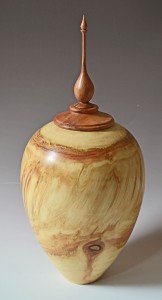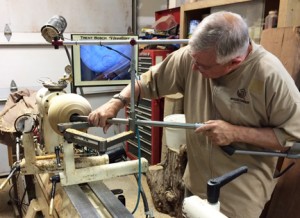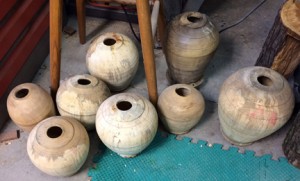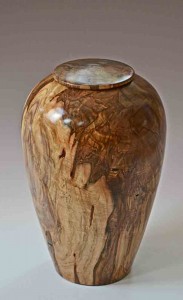 This vessel is lighter than a distant planet, thanks to its very thin-walled body cut from Colorado Aspen. And, tropical tulipwood (one of the rosewood family) picks up the colors caused by stress in the aspen tree. As the woods age together, they will continue to darken somewhat, and some of these pink tones will mellow to wonderful shades of chocolate. (7 x 11)
This vessel is lighter than a distant planet, thanks to its very thin-walled body cut from Colorado Aspen. And, tropical tulipwood (one of the rosewood family) picks up the colors caused by stress in the aspen tree. As the woods age together, they will continue to darken somewhat, and some of these pink tones will mellow to wonderful shades of chocolate. (7 x 11)
The taller vessel has a top and finial turned from carob on another impossibly lightweight vessel of aspen. Carob is one of the few woods that keeps its pink-red color as it ages. This aspen has all of the marvelous swirls and colors that we usually associate with the planet Jupiter.
as it ages. This aspen has all of the marvelous swirls and colors that we usually associate with the planet Jupiter.
Large figured aspen logs are difficult to find. Although aspen is abundant in Colorado, it grows in harsh conditions and seldom reaches a large diameter. This wood came from a stash cut and carefully dried by Dennis Korth. (7 x 17)
Photos by Kay Liggett









